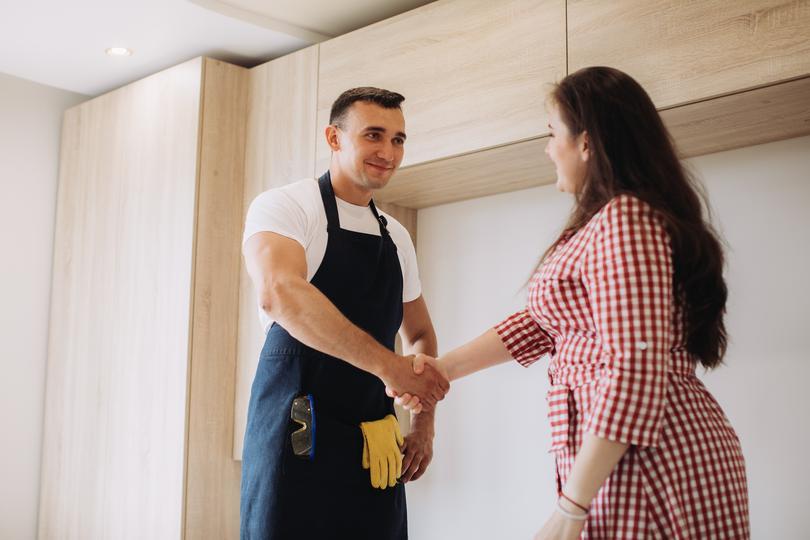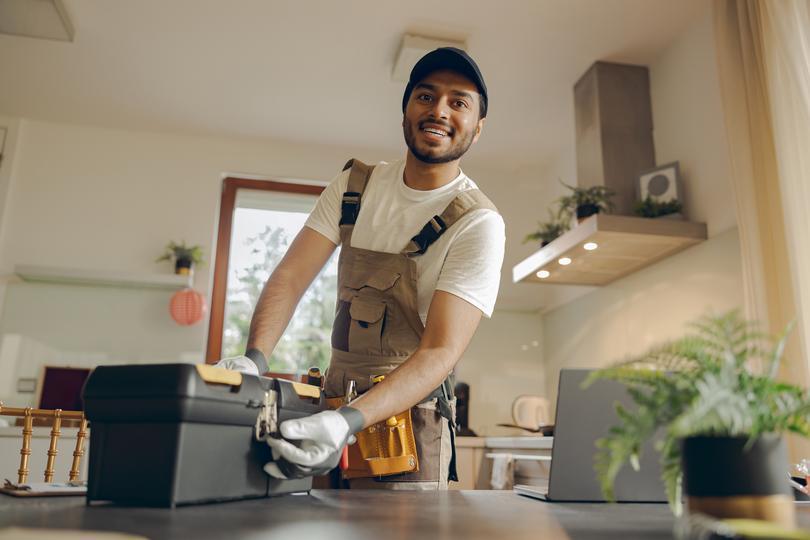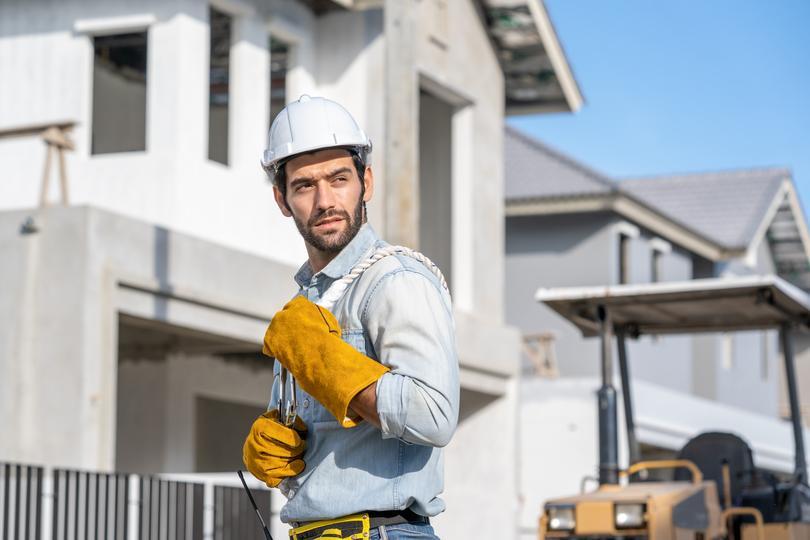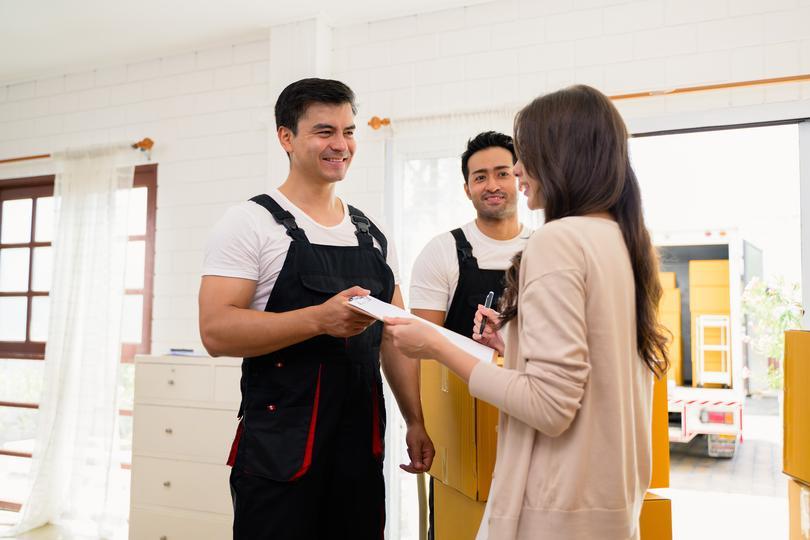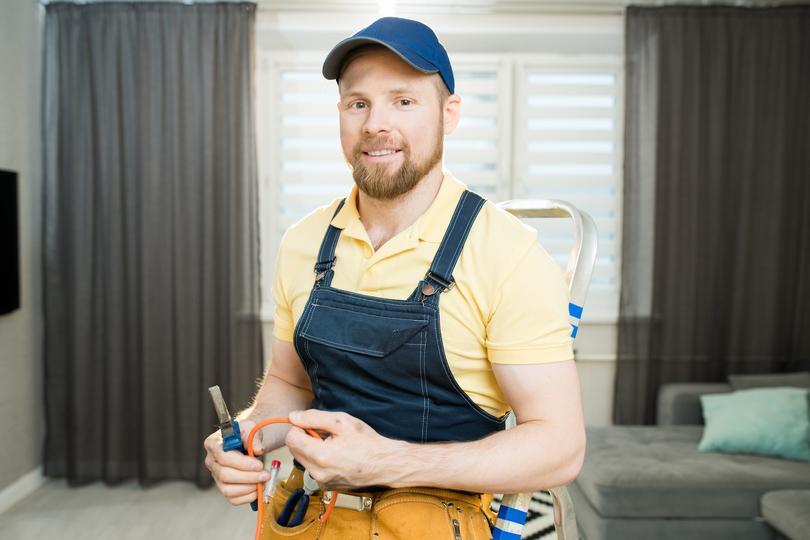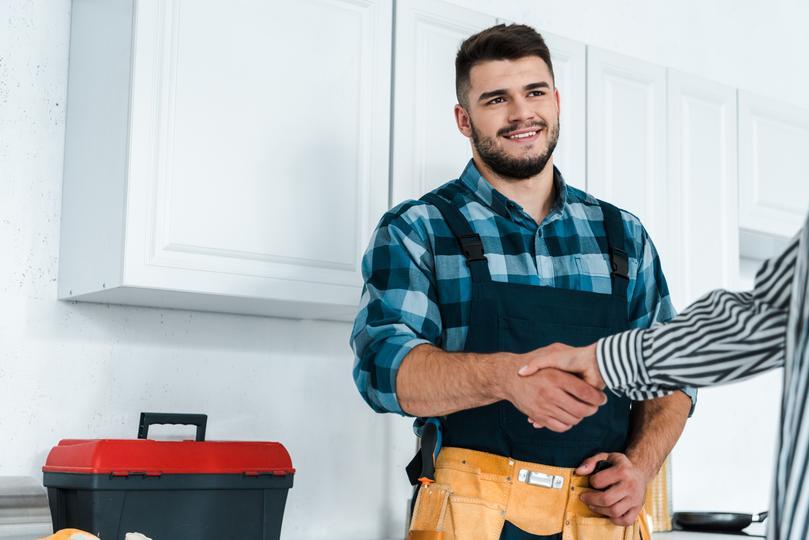Enhance Your Home's Efficiency with Green Insulation - Get No-Obligation Quotes Today!
Discover the Best in Eco-Friendly Insulation Services
Transform your living space with top-rated eco-friendly insulation services. Compare options and secure free estimates to improve your home's energy efficiency and comfort.

Start Your Eco-Friendly Upgrade
Utilize Remodelyng.com to easily compare and find the best eco-friendly insulation services, tailored to fit your unique needs and preferences.
Find top-tier remodeling companies to enhance your living space. Explore services for whole home, kitchen, bathroom renovations, and more with expert craftsmansh
Transform your kitchen into a masterpiece with top-rated remodeling companies. Discover custom designs, luxury finishes, and smart kitchen solutions.
Upgrade your bathroom with the best in the business. Explore spa-like renovations, eco-friendly fixtures, and modern design solutions.
Expand your living space with premium home addition services. From extra bedrooms to sunrooms, get custom solutions tailored to your needs.
Transform your entire home with our comprehensive renovation services. From design to execution, experience seamless integration of style and functionality.
Elevate your home’s curb appeal with our exterior remodeling services. From siding and windows to roofing, create a lasting first impression.
Create your perfect outdoor living space with our deck and patio construction services. Tailored designs meet exceptional craftsmanship.
Maximize your home’s potential with our basement finishing and remodeling services. Turn unused space into your new favorite place.
Embrace sustainability with our energy-efficient remodeling services. From solar panels to green materials, enhance your home’s efficiency and comfort.
Upgrade your living with smart home automation. Control lighting, security, and entertainment systems seamlessly for enhanced comfort and convenience.
Ensure your home meets your needs at any age with our aging-in-place modifications. From grab bars to walk-in tubs, prioritize safety and accessibility.
Add a personal touch to your home with custom carpentry and built-ins. From bookshelves to closets, get bespoke solutions that fit your style and needs.
Elevate your home with our flooring installation services. Choose from high-end hardwood, marble, or custom tiles to create a stunning foundation for your space.
Preserve the past and embrace the future with our historic home renovation services. Specializing in revitalizing heritage homes with a touch of modern convenien
Enhance your outdoor living space with our professional hardscaping services. From patios to walkways, our expert team creates beautiful, durable outdoor areas.
Ensure your home is safe and secure with our high-tech security systems installation services. From advanced surveillance to smart locks, enjoy peace of mind wit
Enhance your home’s energy efficiency and aesthetic appeal with our window and door replacement services. Choose from a wide range of stylish and durable options
Illuminate your home with custom lighting solutions that blend functionality and design. From LED upgrades to automated lighting systems, light up your space you
Create the ultimate entertainment space with our home theater installation services. Experience cinema-quality sound and visuals in the comfort of your home.
Enhance your outdoor living spaces with our outdoor lighting and electrical system services. From garden lights to integrated outdoor entertainment systems, make
Transform your outdoor space into a serene oasis with our custom water feature installations. From fountains to koi ponds, add a touch of tranquility to your hom
Achieve the perfect indoor environment with our advanced climate control systems. Enjoy tailored temperature and humidity settings for ultimate comfort all year
Ensure your home is protected with our roof replacement and repair services. From leak repairs to complete roof overhauls, our experts deliver quality workmanshi
Maximize your home’s potential by transforming your attic into a functional living space. Whether it’s a new bedroom, office, or playroom, our attic remodeling s
Create the ultimate outdoor living experience with our custom design and construction services. From kitchens to fire pits, enjoy your outdoor space to the fulle
Make your home accessible for everyone with our handicap remodeling services. From ramps to accessible bathrooms, we ensure your space meets ADA standards.
Create a productive and stylish home office space with our remodeling services. From ergonomic designs to custom storage, work from home in comfort and style.
Add value and functionality to your home with a custom pool house. Perfect for entertaining, changing, or simply relaxing by the poolside.
Transform your garage into more than just a place for parking. Our garage remodeling services can turn it into a workshop, gym, or additional living space, tailo
How it works?
Our process guarrantees that you always get afair and competitive quote. No more overbilling!

- Submit an Enquiry Describing Your Project
- Begin by submitting an enquiry for your Eco-Friendly Insulation needs on Remodelyng.com, ensuring that all relevant project specifics are covered to match you accurately with skilled contractors.
- Experts Match You With Qualified Contractors
- Our Remodelyng.com specialists will assess your project details and then invite the most suitable contractors, who have a proven track record of success on Eco-Friendly Insulation projects, to submit a competitive quote for your consideration.
- Contractors Offer Their Best Quotes
- Selected companies, aware of the competition and keen to win your project, will put forward fair and competitive quotes, ensuring you get the best deal for your Eco-Friendly Insulation project.
- Review, Compare, and Choose
- You'll receive these quotes along with access to the contractors' profiles, including reviews, insurance details, and license information. This comprehensive data allows you to make an informed decision, picking the contractor that best fits your project's requirements and budget, based on factual evidence rather than guesswork.
Why Choose Remodelyng.com?
At Remodelyng.com, we're committed to making your Eco-Friendly Insulation journey seamless and rsik-free. From the first click to the completion of your project, our team is here to support you every step of the way.

- No Cost, No Obligation
- Submitting a project request on Remodelyng.com is absolutely free, and you're under no obligation to proceed. We understand the importance of exploring your options before making a decision.
- Multiple Quotes
- Receive up to 3 competitive quotes from our network of reliable contractors. We make it easy for you to compare options and ensure you're getting the best deal for your project.
- Best Price Guarantee
- Our platform is designed to help you always find the best price for essential home improvements. With a wide range of contractors, you're sure to get a great deal for high-quality work.
- Quality and Trust
- Choose from a selection of top-rated professionals vetted for quality and reliability. Our rigorous selection process ensures that you're matched with the best contractors who have a proven track record of success.
- Comprehensive Services
- From initial consultation to the final touches, Remodelyng.com offers a wide range of services to cover all aspects of your remodeling project. Whether it's a kitchen upgrade, bathroom renovation, or a full home remodel, we have the expertise to support your vision.
- Instant Booking & Convenience
- With Remodelyng.com, you can book your project instantly online. No more waiting for callbacks or dealing with multiple contractors. Our streamlined process saves you time and hassle, making home improvement projects as straightforward as possible.
Eco-Friendly Insulation Installation Checklists
Navigate the process of upgrading your home with eco-friendly insulation through our comprehensive checklists, designed to assist you at every stage, ensuring a seamless and eco-conscious improvement.
Step 1
Planning Your Eco-Friendly Insulation Upgrade
How Do I Start Planning My Insulation Upgrade?
Initiating your insulation upgrade begins with meticulous planning and a focus on sustainability. Here’s how to ensure a thoughtful approach.
- Defining Insulation Goals
- Identify your main goals for upgrading insulation—whether it’s improving energy efficiency, enhancing comfort, or reducing your carbon footprint.
- Budgeting Effectively
- Create a realistic budget that accounts for quality materials, professional installation, and any potential incentives or rebates for eco-friendly choices.
- Researching Insulation Types
- Explore different types of eco-friendly insulation materials, such as cellulose, wool, or spray foam, and their benefits and applicability to your home.
- Assessing Your Home's Needs
- Evaluate your home’s current insulation effectiveness and areas for improvement by conducting or scheduling an energy audit.
- Considering Local Climate
- Factor in your local climate and how it affects insulation needs and choices to ensure optimal thermal comfort and energy savings.
- Exploring Incentives
- Investigate government incentives, rebates, or tax credits available for eco-friendly home improvements to maximize your budget.
- Choosing Sustainable Materials
- Prioritize insulation materials that are not only effective but also sourced sustainably and have a low environmental impact.
- Planning for Ventilation
- Ensure that your insulation upgrade includes a plan for maintaining or improving home ventilation for indoor air quality.
- Selecting a Qualified Contractor
- Start looking for reputable contractors who specialize in eco-friendly insulation projects and have a track record of successful installations.
- Scheduling Consultations
- Arrange consultations with potential contractors to discuss your project, get estimates, and understand their approach to sustainable insulation.
Step 2
Selecting the Right Contractor for Eco-Friendly Insulation
How Do I Choose the Best Contractor for My Insulation Project?
Choosing the right contractor is crucial for an eco-friendly insulation project. Follow these steps to ensure a perfect match.
- Verifying Credentials and Experience
- Look for contractors with specific experience in eco-friendly insulation, and verify their credentials, certifications, and insurance coverage.
- Checking Past Projects and References
- Review the contractor’s portfolio of previous insulation projects and request references to assess their quality of work and customer satisfaction.
- Understanding Their Approach to Sustainability
- Discuss the contractor’s approach to sustainability, including their choice of materials and methods, to align with your eco-friendly goals.
- Comparing Quotes and Materials
- Get detailed quotes from multiple contractors, comparing not just the cost but also the types of materials proposed and their environmental impact.
- Evaluating Communication and Customer Service
- Ensure clear and responsive communication with the contractor, as this will be key to a successful project and any future service needs.
- Reviewing Contracts Thoroughly
- Examine all contract details, including scope of work, timelines, costs, and warranties, to ensure everything is in order and meets your expectations.
- Discussing Project Timeline and Disruptions
- Talk about the expected project duration and any potential disruptions to your daily life, ensuring the contractor can work within your schedule.
- Clarifying Aftercare and Maintenance
- Understand what aftercare is provided, including maintenance tips and how to address any issues that may arise after the installation.
- Finalizing Your Selection
- Once you’re satisfied with a contractor’s expertise, sustainability practices, and project plan, proceed to finalize your agreement.
- Preparing for Installation Day
- Coordinate with your contractor to prepare your home for installation day, including clearing necessary spaces and establishing work areas.
Step 3
Pre-Installation Preparation for Eco-Friendly Insulation
What Should I Do to Prepare for Insulation Installation?
Effective preparation is key to a smooth insulation installation. Here’s your pre-installation checklist.
- Confirming Insulation Details
- Review and confirm all details of the insulation materials and installation plan with your contractor to ensure alignment with your goals.
- Securing Necessary Permits
- Ensure that all required permits for the insulation upgrade have been obtained to comply with local building codes and regulations.
- Preparing the Installation Area
- Clear the attic, walls, or other areas receiving insulation of personal belongings and debris to facilitate easy access and installation.
- Discussing Safety Protocols
- Talk to your contractor about safety measures during installation, especially if you plan to stay at home during the upgrade.
- Arranging for Pets and Children
- Make arrangements for pets and children to ensure their safety and minimize stress during the installation process.
- Planning for Ventilation Adjustments
- Discuss any necessary adjustments to your home’s ventilation system with your contractor to ensure proper air flow after insulation is installed.
- Notifying Neighbors
- Inform neighbors about the upcoming project, especially if it involves exterior work or may cause noise.
- Setting Up a Communication Plan
- Establish a clear communication plan with your contractor for updates and questions during the installation process.
- Reviewing the Final Checklist
- Go over a final checklist with your contractor to ensure all preparations are complete and you’re ready for the installation to begin.
- Ensuring Access for Contractors
- Make sure contractors have clear access to your home and the installation site, including parking and entry paths.
Step 4
Post-Installation Checklist for Eco-Friendly Insulation
How Do I Conclude My Insulation Project?
After the installation of your eco-friendly insulation, these steps will help you wrap up the project effectively.
- Conducting a Final Inspection
- Walk through the installation with your contractor to ensure the insulation is properly installed and meets all project specifications.
- Reviewing Maintenance and Care
- Discuss maintenance and care for your new insulation to maintain its effectiveness and longevity.
- Collecting Documentation
- Gather all project documentation, including warranties, invoices, and any product literature for your records.
- Understanding Warranty Coverage
- Ensure you understand the warranty coverage for the insulation materials and installation work.
- Scheduling a Follow-Up
- If applicable, schedule a follow-up visit or energy audit to assess the effectiveness of the insulation and any impact on your energy consumption.
- Providing Feedback
- Provide feedback or a review for your contractor to acknowledge their work and help others in their selection process.
- Updating Home Insurance
- Consider updating your home insurance to reflect the added value and improvements made through eco-friendly insulation.
- Monitoring Energy Savings
- Keep track of your energy bills to monitor the savings and effectiveness of your new insulation over time.
- Celebrating Your Green Upgrade
- Acknowledge the completion of your eco-friendly project and enjoy the comfort and savings it brings to your home.
- Planning Future Eco-Friendly Projects
- Reflect on the success of your insulation project to inspire future eco-friendly home improvements.
Eco-Friendly Insulation Ideas Gallery
Need Some Inspiration?
Take a look at our handpicked assortment of stylish and refined Eco-Friendly Insulation concepts, thoughtfully selected to spark creativity and inspiration.
How much does Eco-Friendly Insulation costs?
More than a marketplace
We Are Your Closest Ally
Our hand-picked 5-stars pros are absolutely determined to make a Eco-Friendly Insulation project succeed. Our only question, will it be yours?
Top services from top contractors
More Renovation Services
Remodelyng.com exists to connect you to the right remodeling contractor, first time and every time, whatever the remodeling project.
Transform your kitchen into a masterpiece with top-rated remodeling companies. Discover custom designs, luxury finishes, and smart kitchen solutions.
Upgrade your bathroom with the best in the business. Explore spa-like renovations, eco-friendly fixtures, and modern design solutions.
Expand your living space with premium home addition services. From extra bedrooms to sunrooms, get custom solutions tailored to your needs.
Transform your entire home with our comprehensive renovation services. From design to execution, experience seamless integration of style and functionality.
Elevate your home’s curb appeal with our exterior remodeling services. From siding and windows to roofing, create a lasting first impression.
Create your perfect outdoor living space with our deck and patio construction services. Tailored designs meet exceptional craftsmanship.
Maximize your home’s potential with our basement finishing and remodeling services. Turn unused space into your new favorite place.
Embrace sustainability with our energy-efficient remodeling services. From solar panels to green materials, enhance your home’s efficiency and comfort.
Upgrade your living with smart home automation. Control lighting, security, and entertainment systems seamlessly for enhanced comfort and convenience.
Ensure your home meets your needs at any age with our aging-in-place modifications. From grab bars to walk-in tubs, prioritize safety and accessibility.
Add a personal touch to your home with custom carpentry and built-ins. From bookshelves to closets, get bespoke solutions that fit your style and needs.
Elevate your home with our flooring installation services. Choose from high-end hardwood, marble, or custom tiles to create a stunning foundation for your space.
Preserve the past and embrace the future with our historic home renovation services. Specializing in revitalizing heritage homes with a touch of modern convenien
Enhance your outdoor living space with our professional hardscaping services. From patios to walkways, our expert team creates beautiful, durable outdoor areas.
Ensure your home is safe and secure with our high-tech security systems installation services. From advanced surveillance to smart locks, enjoy peace of mind wit
Enhance your home’s energy efficiency and aesthetic appeal with our window and door replacement services. Choose from a wide range of stylish and durable options
Illuminate your home with custom lighting solutions that blend functionality and design. From LED upgrades to automated lighting systems, light up your space you
Create the ultimate entertainment space with our home theater installation services. Experience cinema-quality sound and visuals in the comfort of your home.
Enhance your outdoor living spaces with our outdoor lighting and electrical system services. From garden lights to integrated outdoor entertainment systems, make
Transform your outdoor space into a serene oasis with our custom water feature installations. From fountains to koi ponds, add a touch of tranquility to your hom
Achieve the perfect indoor environment with our advanced climate control systems. Enjoy tailored temperature and humidity settings for ultimate comfort all year
Ensure your home is protected with our roof replacement and repair services. From leak repairs to complete roof overhauls, our experts deliver quality workmanshi
Maximize your home’s potential by transforming your attic into a functional living space. Whether it’s a new bedroom, office, or playroom, our attic remodeling s
Create the ultimate outdoor living experience with our custom design and construction services. From kitchens to fire pits, enjoy your outdoor space to the fulle
Make your home accessible for everyone with our handicap remodeling services. From ramps to accessible bathrooms, we ensure your space meets ADA standards.
Create a productive and stylish home office space with our remodeling services. From ergonomic designs to custom storage, work from home in comfort and style.
Add value and functionality to your home with a custom pool house. Perfect for entertaining, changing, or simply relaxing by the poolside.
Transform your garage into more than just a place for parking. Our garage remodeling services can turn it into a workshop, gym, or additional living space, tailo
Looking for a reliable Eco-Friendly Insulation company?
Get your project done right the first time!
No Eco-Friendly Insulation job is too big or too small.
We will send you up to 3 fair and competitive quotes!
Have more questions? We can help.
Reach out to our team by sending us an email and we’ll get back to you ASAP.
What is eco-friendly insulation?
Eco-friendly insulation refers to insulation materials that prioritize sustainability, minimizing environmental impact. These materials often have the following characteristics:
- Recycled Content: Made from recycled materials like denim, cotton, or post-consumer recycled glass.
- Renewable Sources: Derived from natural fibers like cellulose, sheep's wool, or hemp.
- Low Embodied Energy: Minimal energy consumption during manufacturing and a smaller carbon footprint.
- Non-Toxic: Free from harmful chemicals, off-gassing, or VOCs (volatile organic compounds).
- Biodegradable or Compostable: Some materials can safely return to the earth at the end of their lifespan.
What are the benefits of eco-friendly insulation?
Choosing eco-friendly insulation offers numerous advantages:
- Environmental Responsibility: Reduce your carbon footprint and contribute to a more sustainable building industry.
- Improved Indoor Air Quality: Many options are non-toxic and do not release harmful chemicals or pollutants into your home.
- Energy Efficiency: Just like traditional insulation, they help regulate temperature, leading to lower energy bills and increased comfort.
- Health & Safety: Many natural options are less irritating than fiberglass, especially for those with sensitivities.
- Resource Conservation: Utilization of recycled content reduces pressure on virgin resources.
What are the different types of eco-friendly insulation?
The market offers several excellent eco-friendly insulation choices, including:
- Cellulose: Made primarily from recycled newspaper, loose-fill or blown-in, excellent R-value.
- Recycled Denim: Batt insulation made from recycled blue jeans, treated for fire and pest resistance.
- Sheep's Wool: Naturally flame-retardant, resists moisture and mold, available in rolls and batts.
- Mineral Wool: Made from recycled slag or rock, dense insulation with good fire resistance and soundproofing.
- Icynene Spray Foam: Expanding foam derived from castor oil, can be open-cell (more breathable) or closed-cell (airtight seal).
How do I choose the right type of eco-friendly insulation?
Selecting the best eco-friendly insulation involves considering the following factors:
- R-Value: The insulation's resistance to heat flow. Higher R-values mean better insulating properties.
- Application Area: Choose insulation suitable for attics, walls, crawl spaces, or specific retrofit situations.
- Climate: Some materials are better suited for extreme temperatures or high humidity environments.
- Fire Resistance: Prioritize insulation with fire-retardant properties for safety.
- Moisture Management: Ensure the material manages moisture effectively to prevent mold growth.
- Budget: Costs vary across different types of eco-friendly insulation.
A knowledgeable insulation contractor can help you assess your home's needs and recommend the optimal solution.
Is eco-friendly insulation more expensive?
Some eco-friendly insulation options can be slightly more expensive initially than traditional fiberglass batts. However, several factors make them a worthwhile investment:
- Energy Savings: Improved energy efficiency often leads to lower utility bills, offsetting the upfront cost over time.
- Health Benefits: The improved indoor air quality and comfort can translate to long-term health savings.
- Environmental Value: Choosing sustainable materials supports a healthy planet and has an intrinsic value for many homeowners.
- Rebates & Incentives: Energy-efficient upgrades, including eco-friendly insulation, may qualify for rebates or tax incentives.
How do I find an eco-friendly insulation contractor?
Finding a contractor specializing in eco-friendly insulation involves a bit of targeted searching. Look for:
- Experience: Seek a contractor with expertise in installing the specific types of eco-friendly insulation you're considering.
- Knowledge & Commitment: They should understand the benefits and technical aspects of sustainable insulation options.
- Referrals & Reviews: Check reviews and seek referrals from homeowners who have had positive experiences.
- Transparent Pricing: Get detailed quotes outlining material and labor costs for comparison purposes.
Start your search on Remodelyng.com to find qualified eco-friendly insulation specialists in your area.
Can I install eco-friendly insulation myself?
The feasibility of DIY eco-friendly insulation depends on the type of insulation and the scope of your project. Consider:
- Type of Insulation: Blown-in cellulose or spray foam insulation typically requires specialized equipment and professional installers.
- Ease of Access: Installing insulation in existing walls is difficult while attic spaces might be more accessible for DIY.
- Experience & Skills: Do you have experience with carpentry, measuring, cutting, and proper sealing techniques?
- Safety: Some materials require safety precautions like wearing respirators or handling protective gear.
Hiring a qualified insulation contractor often ensures proper installation, maximizes energy efficiency, and avoids potential safety hazards.
How does proper insulation improve a home's energy efficiency?
Insulation plays a crucial role in energy efficiency by:
- Slowing Heat Transfer: Insulation creates a barrier against heat flow, keeping your home warmer in winter and cooler in summer.
- Reducing Air Leaks: Proper insulation seals gaps and cracks, preventing conditioned air from escaping your home.
- Maintaining Consistent Temperatures: This reduces strain on your HVAC system, leading to less energy consumed for heating and cooling.
- Improving Overall Comfort: A well-insulated home minimizes drafts and maintains more comfortable temperatures year-round.
What are the signs I need better insulation?
Here are some telltale signs that indicate it's time to upgrade your insulation:
- Drafty Rooms: Noticeable drafts or uneven temperatures can point to inadequate insulation.
- High Energy Bills: Spikes in heating and cooling costs could signify excessive heat loss or gain due to poor insulation.
- Temperature Fluctuations: Difficulty maintaining comfortable temperatures even with your HVAC system running.
- Ice Dams: Forming on your roof in winter indicate heat escaping from your attic, often a sign of insufficient attic insulation.
- Old or Outdated Insulation: If your home has older insulation, it may have deteriorated over time or may not meet modern energy-efficiency standards.
What R-value do I need for my home?
The recommended R-value for insulation depends on your location's climate zone and the area you're insulating. Here's a general guideline:
- Attics: The higher the R-value, the better. Minimum recommendations often range between R-38 and R-60.
- Exterior Walls: R-13 to R-23 works for many climates, but colder regions may require higher values.
- Floors (Above Crawl Spaces): R-19 to R-25 is generally recommended.
- Climate Zone Considerations: Homes in colder climates require higher R-values for optimal energy efficiency.
Consult with an insulation professional or refer to energy efficiency resources like the [ENERGY STAR website](https://www.energystar.gov/) for specific recommendations based on your location.
Where to find good eco-friendly insulation contractors?
Find reliable professionals to install eco-friendly insulation using these resources:
- Referrals: Ask friends, neighbors, realtors, or building professionals for recommendations.
- Specialists: Seek contractors specializing in sustainable building practices or those offering eco-friendly insulation options.
- Online Marketplaces: Remodelyng.com lets you find connect with specialists .
What are the best eco-friendly insulation contractors near me?
The 'best' contractor for you depends on your specific needs. Prioritize those who:
- Specialize in Eco-Friendly Options: Have expertise and experience installing the specific types of insulation you're interested in.
- Demonstrate Commitment: Are passionate about sustainable building and knowledgeable about eco-friendly insulation choices.
- Provide Comprehensive Services: Can conduct energy assessments, recommend solutions, and expertly install the chosen insulation.
- Offer Clear Communication: Provide transparent quotes, explain the benefits of eco-friendly insulation options, and answer your questions thoroughly.
Start your search on Remodelyng.com to find top-rated eco-friendly insulation experts in your area.
What is eco-friendly insulation?
Eco-friendly insulation refers to insulation materials that prioritize sustainability, minimizing environmental impact. These materials often have the following characteristics:
- Recycled Content: Made from recycled materials like denim, cotton, or post-consumer recycled glass.
- Renewable Sources: Derived from natural fibers like cellulose, sheep's wool, or hemp.
- Low Embodied Energy: Minimal energy consumption during manufacturing and a smaller carbon footprint.
- Non-Toxic: Free from harmful chemicals, off-gassing, or VOCs (volatile organic compounds).
- Biodegradable or Compostable: Some materials can safely return to the earth at the end of their lifespan.
What are the benefits of eco-friendly insulation?
Choosing eco-friendly insulation offers numerous advantages:
- Environmental Responsibility: Reduce your carbon footprint and contribute to a more sustainable building industry.
- Improved Indoor Air Quality: Many options are non-toxic and do not release harmful chemicals or pollutants into your home.
- Energy Efficiency: Just like traditional insulation, they help regulate temperature, leading to lower energy bills and increased comfort.
- Health & Safety: Many natural options are less irritating than fiberglass, especially for those with sensitivities.
- Resource Conservation: Utilization of recycled content reduces pressure on virgin resources.
What are the different types of eco-friendly insulation?
The market offers several excellent eco-friendly insulation choices, including:
- Cellulose: Made primarily from recycled newspaper, loose-fill or blown-in, excellent R-value.
- Recycled Denim: Batt insulation made from recycled blue jeans, treated for fire and pest resistance.
- Sheep's Wool: Naturally flame-retardant, resists moisture and mold, available in rolls and batts.
- Mineral Wool: Made from recycled slag or rock, dense insulation with good fire resistance and soundproofing.
- Icynene Spray Foam: Expanding foam derived from castor oil, can be open-cell (more breathable) or closed-cell (airtight seal).
How do I choose the right type of eco-friendly insulation?
Selecting the best eco-friendly insulation involves considering the following factors:
- R-Value: The insulation's resistance to heat flow. Higher R-values mean better insulating properties.
- Application Area: Choose insulation suitable for attics, walls, crawl spaces, or specific retrofit situations.
- Climate: Some materials are better suited for extreme temperatures or high humidity environments.
- Fire Resistance: Prioritize insulation with fire-retardant properties for safety.
- Moisture Management: Ensure the material manages moisture effectively to prevent mold growth.
- Budget: Costs vary across different types of eco-friendly insulation.
A knowledgeable insulation contractor can help you assess your home's needs and recommend the optimal solution.
Is eco-friendly insulation more expensive?
Some eco-friendly insulation options can be slightly more expensive initially than traditional fiberglass batts. However, several factors make them a worthwhile investment:
- Energy Savings: Improved energy efficiency often leads to lower utility bills, offsetting the upfront cost over time.
- Health Benefits: The improved indoor air quality and comfort can translate to long-term health savings.
- Environmental Value: Choosing sustainable materials supports a healthy planet and has an intrinsic value for many homeowners.
- Rebates & Incentives: Energy-efficient upgrades, including eco-friendly insulation, may qualify for rebates or tax incentives.
How do I find an eco-friendly insulation contractor?
Finding a contractor specializing in eco-friendly insulation involves a bit of targeted searching. Look for:
- Experience: Seek a contractor with expertise in installing the specific types of eco-friendly insulation you're considering.
- Knowledge & Commitment: They should understand the benefits and technical aspects of sustainable insulation options.
- Referrals & Reviews: Check reviews and seek referrals from homeowners who have had positive experiences.
- Transparent Pricing: Get detailed quotes outlining material and labor costs for comparison purposes.
Start your search on Remodelyng.com to find qualified eco-friendly insulation specialists in your area.
Can I install eco-friendly insulation myself?
The feasibility of DIY eco-friendly insulation depends on the type of insulation and the scope of your project. Consider:
- Type of Insulation: Blown-in cellulose or spray foam insulation typically requires specialized equipment and professional installers.
- Ease of Access: Installing insulation in existing walls is difficult while attic spaces might be more accessible for DIY.
- Experience & Skills: Do you have experience with carpentry, measuring, cutting, and proper sealing techniques?
- Safety: Some materials require safety precautions like wearing respirators or handling protective gear.
Hiring a qualified insulation contractor often ensures proper installation, maximizes energy efficiency, and avoids potential safety hazards.
How does proper insulation improve a home's energy efficiency?
Insulation plays a crucial role in energy efficiency by:
- Slowing Heat Transfer: Insulation creates a barrier against heat flow, keeping your home warmer in winter and cooler in summer.
- Reducing Air Leaks: Proper insulation seals gaps and cracks, preventing conditioned air from escaping your home.
- Maintaining Consistent Temperatures: This reduces strain on your HVAC system, leading to less energy consumed for heating and cooling.
- Improving Overall Comfort: A well-insulated home minimizes drafts and maintains more comfortable temperatures year-round.
What are the signs I need better insulation?
Here are some telltale signs that indicate it's time to upgrade your insulation:
- Drafty Rooms: Noticeable drafts or uneven temperatures can point to inadequate insulation.
- High Energy Bills: Spikes in heating and cooling costs could signify excessive heat loss or gain due to poor insulation.
- Temperature Fluctuations: Difficulty maintaining comfortable temperatures even with your HVAC system running.
- Ice Dams: Forming on your roof in winter indicate heat escaping from your attic, often a sign of insufficient attic insulation.
- Old or Outdated Insulation: If your home has older insulation, it may have deteriorated over time or may not meet modern energy-efficiency standards.
What R-value do I need for my home?
The recommended R-value for insulation depends on your location's climate zone and the area you're insulating. Here's a general guideline:
- Attics: The higher the R-value, the better. Minimum recommendations often range between R-38 and R-60.
- Exterior Walls: R-13 to R-23 works for many climates, but colder regions may require higher values.
- Floors (Above Crawl Spaces): R-19 to R-25 is generally recommended.
- Climate Zone Considerations: Homes in colder climates require higher R-values for optimal energy efficiency.
Consult with an insulation professional or refer to energy efficiency resources like the [ENERGY STAR website](https://www.energystar.gov/) for specific recommendations based on your location.
Where to find good eco-friendly insulation contractors?
Find reliable professionals to install eco-friendly insulation using these resources:
- Referrals: Ask friends, neighbors, realtors, or building professionals for recommendations.
- Specialists: Seek contractors specializing in sustainable building practices or those offering eco-friendly insulation options.
- Online Marketplaces: Remodelyng.com lets you find connect with specialists .
What are the best eco-friendly insulation contractors near me?
The 'best' contractor for you depends on your specific needs. Prioritize those who:
- Specialize in Eco-Friendly Options: Have expertise and experience installing the specific types of insulation you're interested in.
- Demonstrate Commitment: Are passionate about sustainable building and knowledgeable about eco-friendly insulation choices.
- Provide Comprehensive Services: Can conduct energy assessments, recommend solutions, and expertly install the chosen insulation.
- Offer Clear Communication: Provide transparent quotes, explain the benefits of eco-friendly insulation options, and answer your questions thoroughly.
Start your search on Remodelyng.com to find top-rated eco-friendly insulation experts in your area.
